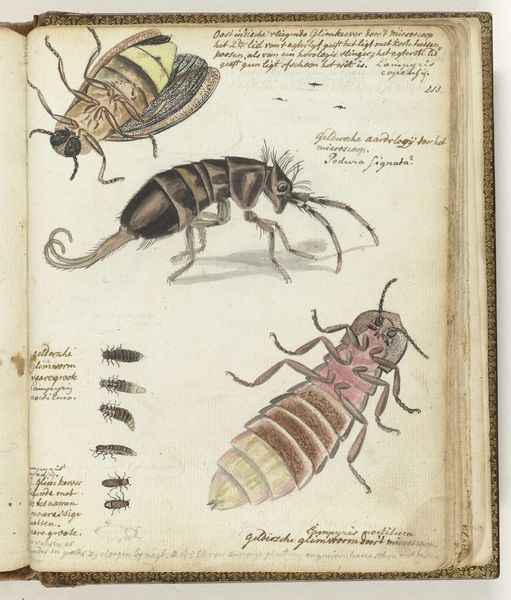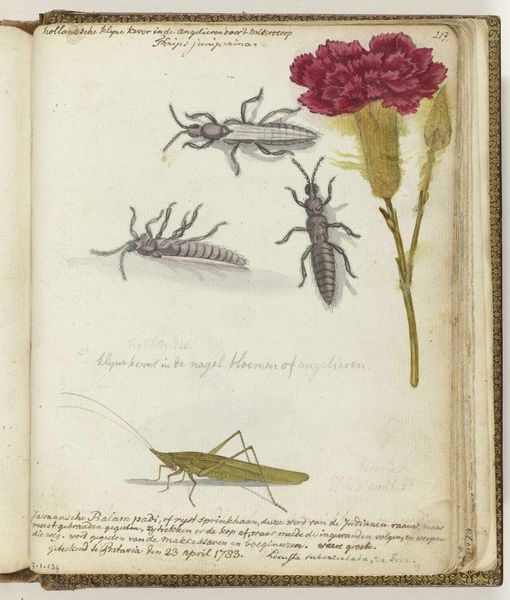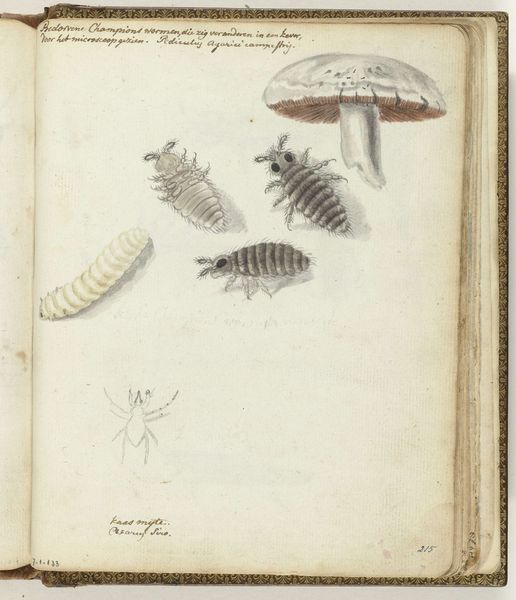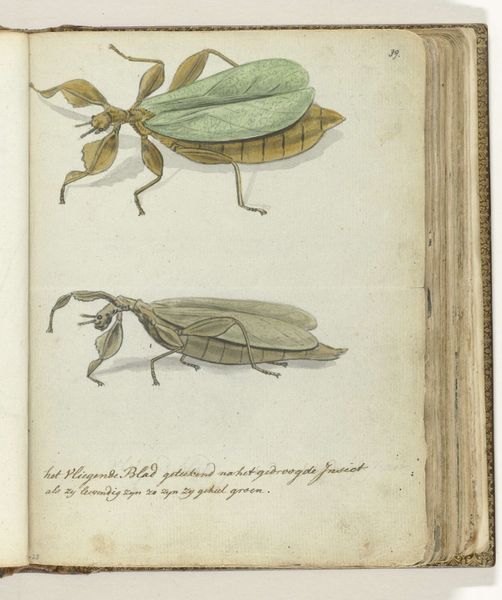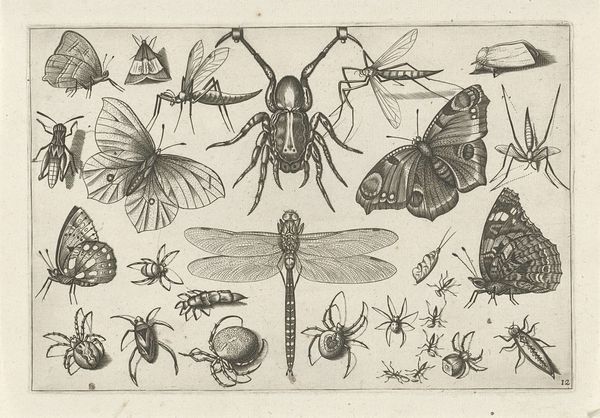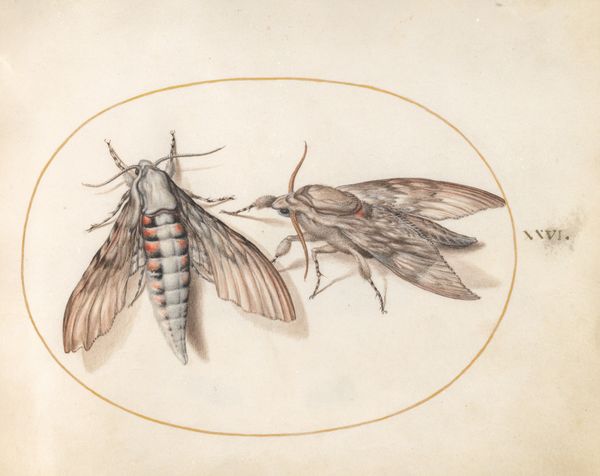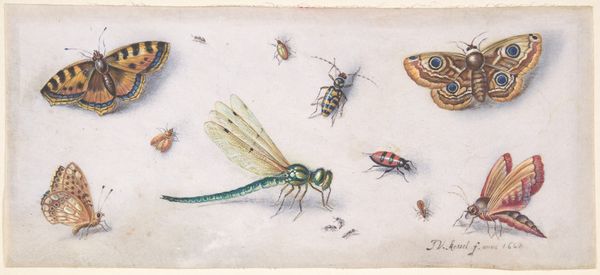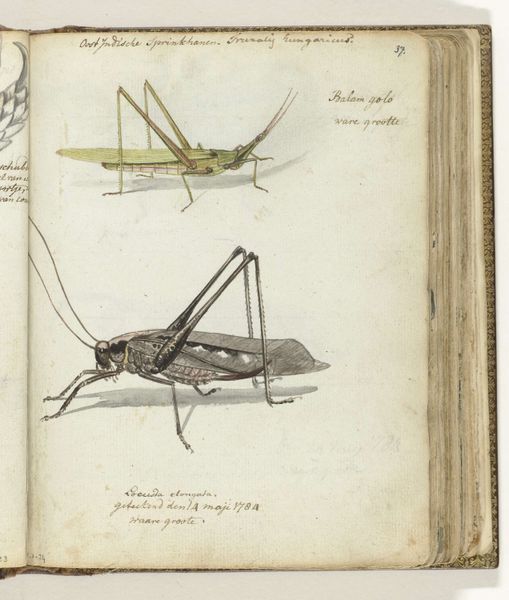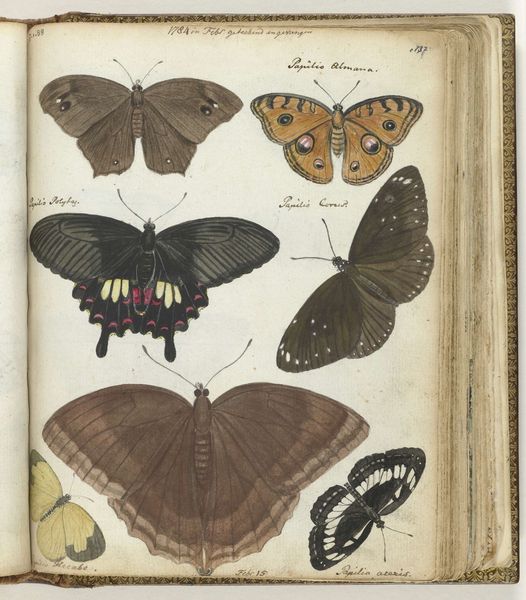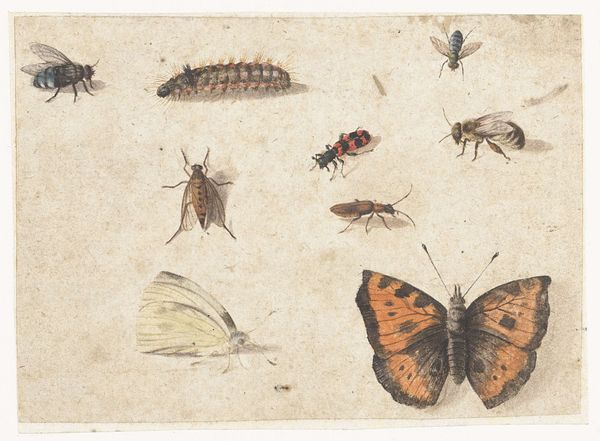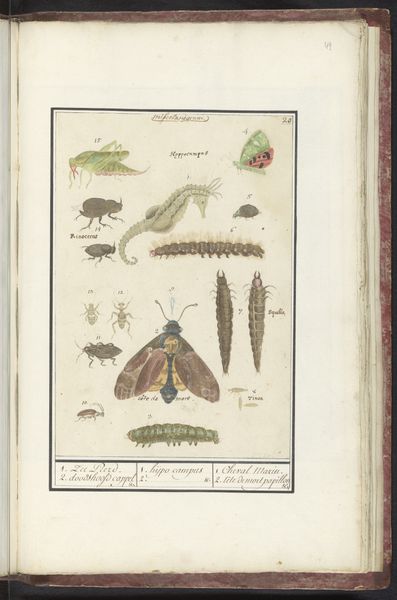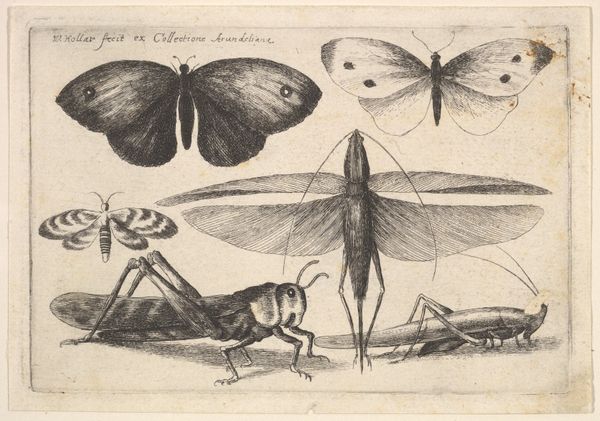
drawing, coloured-pencil, paper
#
drawing
#
coloured-pencil
#
paper
#
coloured pencil
#
naturalism
Dimensions: height 195 mm, width 155 mm
Copyright: Rijks Museum: Open Domain
Curator: I'm drawn to this page of insect studies, "Insecten," possibly created around 1783 by Jan Brandes, rendered meticulously with coloured pencil on paper. It's quite a curious collection. Editor: They do feel curiously alien and yet meticulously observed. I notice that the paper has a yellowish tinge from age and what look like quick handwritten notes around each insect specimen. The starkly rendered insects against that aged parchment feels, I don’t know…a bit ominous. Curator: Ominous? Well, Brandes was traveling quite extensively for the Dutch East India Company, documenting flora and fauna, perhaps for scientific or even commercial interests. There is that precision that certainly implies close scrutiny of these organisms' structures and how those forms would benefit industry. Editor: Absolutely. It makes me consider the actual labour. The cost, so to speak. Consider the procurement of these insects, the preparation of pigments, the expense and transport of the paper and coloured pencils; that time spent meticulously capturing each body… what social hierarchies allowed for such an activity? It’s clearly part of a much larger system of resource extraction. Curator: You make a good point. Perhaps "ominous" is another way to describe how naturalism aestheticizes processes of colonization and resource exploitation. Still, it’s difficult not to admire the delicate rendering of these creatures. See how he’s captured the iridescent sheen on what appears to be the wing of a weevil, and the segmented body of the caterpillar emerging from its chrysalis, it’s beautifully done. Almost reverential in a strange way, I think. Editor: True, and I think that contrast, between aesthetic beauty and extractive process, holds so much tension. What's more interesting is this strange intimacy with what we often deem "pests." There's an acceptance that's, I think, both revolutionary and a clear indicator of a very different system of ethics from our own. Curator: Well, looking closer, there's something oddly delightful and insightful about encountering these insects, frozen as they are. These were the actual wonders that Brandes encountered! Thanks for pointing out that productive friction. Editor: Yes! The work has really changed from first impression. Brandes offers such insights through his specimens, that they still resonate centuries later is remarkable.
Comments
No comments
Be the first to comment and join the conversation on the ultimate creative platform.
